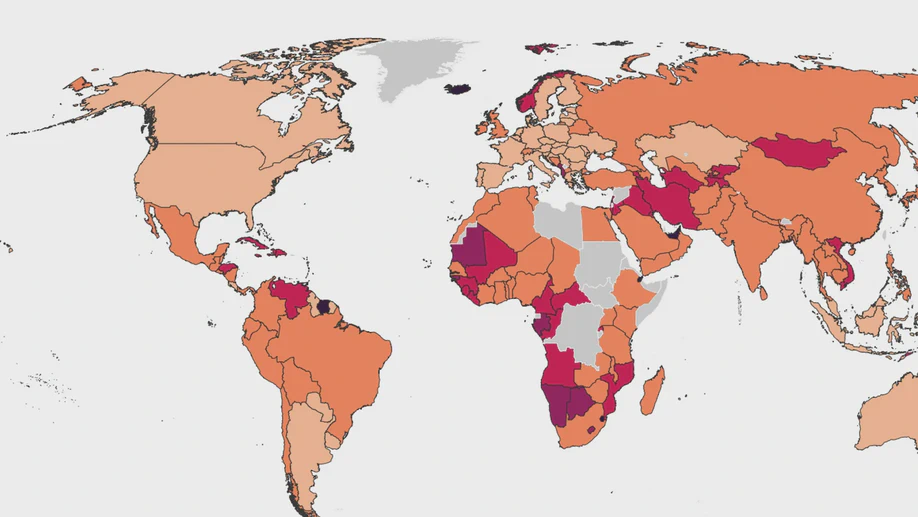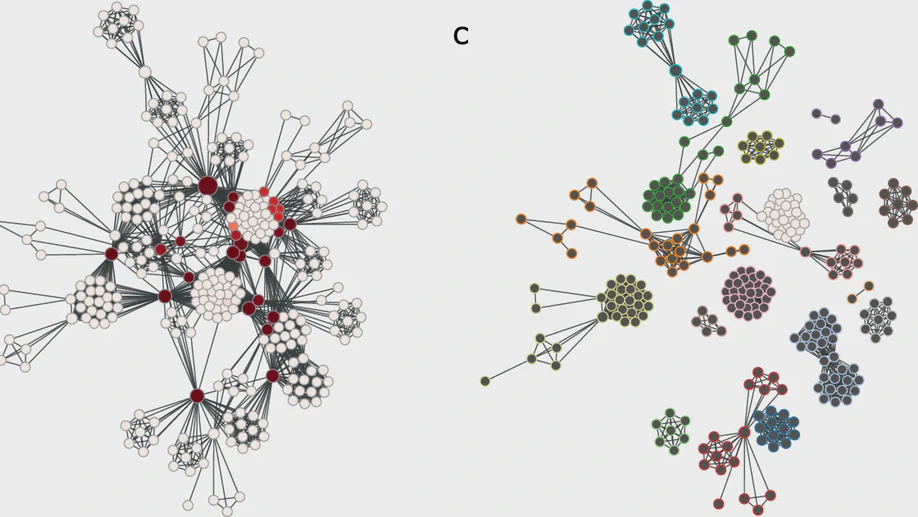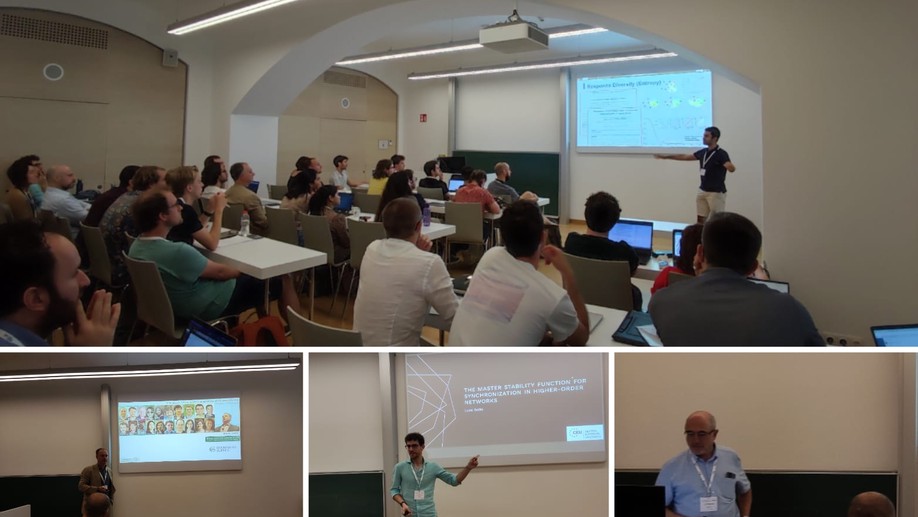
Marco Grassia
Assistant Professor · Network Science and Machine Learning
University of Catania, Italy
About Me
I am an Assistant Professor (RTDa) at the Department of Electrical, Electronics and Computer Engineering (DIEEI) at the University of Catania, Italy.
I earned my Ph.D. in Computer Engineering with a thesis focused on tackling NP-hard graph problems through Geometric Deep Learning. My research sits at the intersection of Network Science and Machine Learning, with a focus on developing novel computational methods for analyzing complex networks and solving challenging optimization problems.
Currently, I conduct research at the Network Science Laboratory and I am a member of the ICSC (Centro Nazionale HPC, Big Data e Quantum Computing), Spoke 3 focused on Astrophysics & Cosmos Observations, where I apply advanced machine learning and deep learning techniques to astrophysical data analysis.
I am also actively involved in the scientific community as a member and CTO of NetPlace, and as a member of the External Relations Committee of CSS/Italy (Italian Chapter of the Complex Systems Society).
Interests
- Network Science
- Artificial Intelligence
- Geometric Deep Learning
- Econophysics
- Complex Systems
- High Performance Computing
Education
-
Ph.D. in Computer Engineering with a thesis on Network Science and Machine Learning, 2022
University of Catania
-
M.Sc. in Computer Engineering, 2018
University of Catania
-
B.Sc. in Computer Engineering, 2016
University of Catania
Featured Publications
Robustness and resilience of complex networks
Complex networks are ubiquitous: a cell, the human brain, a group of people and the Internet are all examples of interconnected many-body systems characterized by macroscopic properties that cannot be trivially deduced from those of their microscopic constituents. Such systems are exposed to both internal, localized, failures and external disturbances or perturbations. Owing to their interconnected structure, complex systems might be severely degraded, to the point of disintegration or systemic dysfunction. Examples include cascading failures, triggered by an initially localized overload in power systems, and the critical slowing downs of ecosystems which can be driven towards extinction. In recent years, this general phenomenon has been investigated by framing localized and systemic failures in terms of perturbations that can alter the function of a system. We capitalize on this mathematical framework to review theoretical and computational approaches to characterize robustness and resilience of complex networks. We discuss recent approaches to mitigate the impact of perturbations in terms of designing robustness, identifying early-warning signals and adapting responses. In terms of applications, we compare the performance of the state-of-the-art dismantling techniques, highlighting their optimal range of applicability for practical problems, and provide a repository with ready-to-use scripts, a much-needed tool set.

Insights into countries’ exposure and vulnerability to food trade shocks from network-based simulations
In the context of a global food system, the dynamics associated to international food trade have become key determinants of food security. In this paper, we resort to a diffusion model to simulate how shocks to domestic food production propagate through the international food trade network and study the relationship between trade openness and vulnerability. The results of our simulations suggest that low-income and food insecure countries tend to be the more exposed to external shocks and, at the same time, they are usually not in a position to take full advantage of international food trade when it comes to shield themselves from shocks to domestic production. We also study and discuss how nodes characteristics are associated with the propagation dynamics and with countries’ vulnerability, finding that simple centrality measures can significantly predict the magnitude of the shock experienced by individual countries.

Machine learning dismantling and early-warning signals of disintegration in complex systems
From physics to engineering, biology and social science, natural and artificial systems are characterized by interconnected topologies whose features – e.g., heterogeneous connectivity, mesoscale organization, hierarchy – affect their robustness to external perturbations, such as targeted attacks to their units. Identifying the minimal set of units to attack to disintegrate a complex network, i.e. network dismantling, is a computationally challenging (NP-hard) problem which is usually attacked with heuristics. Here, we show that a machine trained to dismantle relatively small systems is able to identify higher-order topological patterns, allowing to disintegrate large-scale social, infrastructural and technological networks more efficiently than human-based heuristics. Remarkably, the machine assesses the probability that next attacks will disintegrate the system, providing a quantitative method to quantify systemic risk and detect early-warning signals of system’s collapse. This demonstrates that machine-assisted analysis can be effectively used for policy and decision-making to better quantify the fragility of complex systems and their response to shocks.
Recent Publications
Latent Geometry-Driven Network Automata for Complex Network Dismantling
How Well is Human Attention Preserved in fMRI-Based Visual Brain Decoding?
Machine Learning Supernovae’s Progenitor Characterization
Saliency Matters: From Nodes to Objects
Recent & Upcoming Talks
Geometric Deep Learning Network Dismantling
Focused seminar on Geometric Deep Learning with applications to Network Dismantling
Warm-up: Network analysis with Python
From data to network analysis with Python
Experience
Visiting Researcher
Center for Complex Network Intelligence (CCNI), Tsinghua University
Research assignment at the Center for Complex Network Intelligence (CCNI), Tsinghua Laboratory of Brain and Intelligence (THBI).
Focus on advanced geometric deep learning methods for complex network analysis and optimization.
CTO (Chief Technology Officer)
NetPlace - Network Science Society
Lecturer of Front-end Web Development
Free Mind Foundry S.R.L.
Course instructor in Front-end Web Development for the “.NET Training Program (2023)” training course.
Topics include JavaScript, TypeScript and Angular.
Assistant Professor (RTDa)
University of Catania
Untenured Assistant Professor (Ricercatore a Tempo Determinato di tipo A, RTDa).
Teaching Foundations of Programming (2023-2024) and of Computer Science (2022-2023).
Bachelor’s Degree in Computer Engineering (L-8), Department of Electrical, Electronic and Computer Engineering (DIEEI), University of Catania, Italy.
Adjunct professor (professore a contratto)
University of Catania
Adjunct professor of Foundations of Computer Science. Sections: J-Pr (2021-2022) and P-Z (2022-2023).
Bachelor’s Degree in Computer Engineering (L-8), Department of Electrical, Electronic and Computer Engineering (DIEEI), University of Catania, Italy.
Researcher
Consorzio COMETA
External Relations Committee
Italian Chapter of the Complex Systems Society (CSS/Italy)
Ph.D. Student
Department of Electrical Electronics and Computer Engineering (DIEEI), University of Catania
Research Intern
Center for Complex Network Intelligence (CCNI), Tsinghua Laboratory of Brain and Intelligence (THBI)
Remote internship at the Center for Complex Network Intelligence (CCNI), Tsinghua Laboratory of Brain and Intelligence (THBI).
Research on network dismantling approaches that leverage the geometry of the network.
Machine Learning Intern
Nokia Bell Labs, Data Analytics
- Worked on master’s thesis and on paper that was submitted to the International Joint Conference on Artificial Intelligence XXVIII – IJCAI-19
- “Fine-grained search space classification for hard subset problems”
- Application of Machine Learning techniques to Network Science
- Worked in team with Post-Doctoral Researchers and Ph.D. students
- Python, C++
- Keras, Auto-sklearn, iGraph, graph-tool
System Integration and Home Automation Intern
Systemia S.R.L.
- Designed and developed Amazon’s Alexa Custom and Smart Home Skills to provide integration with Vantage Controls devices
- Studied how to design Vocal User Interfaces (VUIs)
- Gained familiarity with Amazon Web Services
- Amazon Web Services IaaS, OpenVPN, Node.JS
